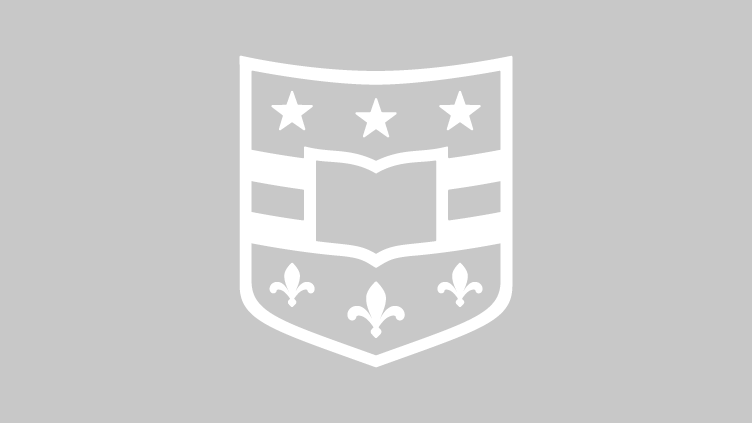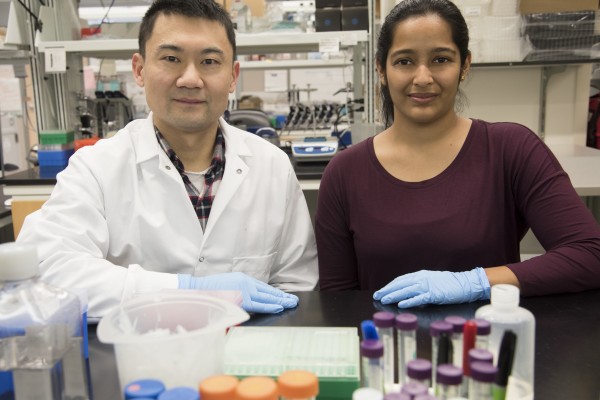Muscle relaxant may be viable treatment for rare form of diabetes
A research team led by Washington University endocrinologist Fumihiko Urano, MD, PhD, (right) and first author Simin Lu, PhD student, (left) has discovered that a commonly prescribed muscle relaxant may be an effective treatment for Wolfram syndrome, a rare but devastating form of diabetes.
Hawkins named chief of hepatobiliary-pancreatic and GI surgery
William Hawkins, MD, a noted pancreatic cancer surgeon, has been named chief of the Section of Hepatobiliary-Pancreatic and Gastrointestinal Surgery, and the Neidorff Family and Robert C. Packman Professor at the School of Medicine.
Damage to brain networks affects stroke recovery
Initial results of an innovative study may significantly change how some patients are evaluated after a stroke, according to School of Medicine researchers. Shown is the study’s senior author, Maurizio Corbetta, MD.
Trustees grant faculty appointments, promotions
At the Oct. 3 Board of Trustees meeting, several Washington University faculty members were appointed with tenure or promoted with tenure. Read more for details.
Exploring the genomes of mice and men
New research by Ting Wang, PhD, (left) and graduate student Vasavi Sundaram has uncovered some striking differences in the genomes of humans and mice that can help scientists determine when a mouse may be a good stand-in to study human biology and disease.
Washington People: Justin Serugo
After fleeing his war-torn homeland, the Democratic Republic of Congo, Justin Serugo was relocated to St. Louis, where he eventually landed a job at the School of Medicine. He now works on a childhood malnutrition project.
Wall recognized for work at Ethiopian university
L. Lewis Wall, MD, DPhil (right), has received a gold medal for his “meritorius contributions” to medical education at Mekelle University College of Medical and Health Sciences in Mekelle, Ethiopia. He is a professor of obstetrics and gynecology at the Washington University School of Medicine and of anthropology in Arts & Sciences.
New treatment for Marfan syndrome shows promise
An investigational treatment for Marfan syndrome is as effective as the standard therapy at slowing enlargement of the aorta, the large artery of the heart that delivers blood to the body, according to a new study co-authored by Alan C. Braverman, MD. Slowing aortic growth in Marfan syndrome is important in protecting against the tearing of the aorta.
Treatment strategy may reduce infants’ wheezing caused by virus
The antibiotic azithromycin may reduce the risk of
recurrent wheezing in infants hospitalized with a common respiratory
infection, according to a small pilot study at the School of Medicine. Reduced wheezing may lower an infant’s
risk of developing asthma over the next several years, according to the
researchers, including first author Avraham Beigelman, MD.
Second season of ‘The Frontline for Hope’ to air
The second season of “The Frontline for Hope,” a documentary series following patients, families and clinicians at St. Louis Children’s Hospital, will premiere Saturday, Nov. 22. The series highlights School of Medicine physicians and staff and St. Louis Children’s patients and their families.
View More Stories

